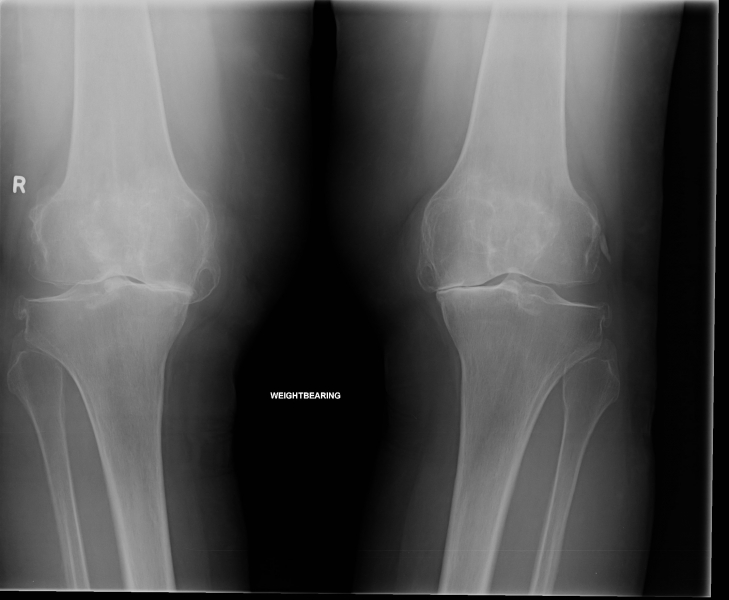Arthritis is a condition which affects joints. The joints of the body have very smooth surfaces that allow easy, pain free movement.
The knee joint is composed of the top of the tibia (shin bone) and the bottom of the femur (thigh bone). The patella (kneecap) is also an integral part of the knee joint. Where these three bones contact each other there is a layer of very smooth articular cartilage lining.
Arthritis of the knee occurs when the smooth articular cartilage lining is damaged and worn away. Eventually the wearing away of the articular cartilage lining exposes the underlying bone.
This results in pain and stiffness in the knee.






